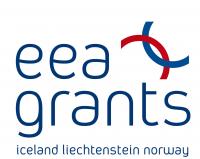Enhancement of the research infrastructure for individualised therapy of chronically sick children
| INTRODUCTION | ABOUT THE PROJECT | CHRONICALLY SICK CHILD | INDIVIDUALIZATION OF THERAPY | PROJECT OUTPUTS |
| DURING THE PROJECT | ABOUT THE LABORATORY | PUBLICITY | PHOTOGALLERY | REFERENCES |
INDIVIDUALIZATION OF THERAPY
If the therapy is set right in children, serious complications (toxicity of the therapy) and undesirable effects (deficiency of growth, immunity and social adaptation) are avoided, the aggressiveness of the therapy is alleviated and its effectiveness is increased. We can thus prevent the disease from developing, and affect the quality of life in adulthood. Although the pharmacogenomics has not yet been incorporated into the usual clinical practice of asthma therapy, significant progress in this direction has been described. A similar individualised approach is also taken to many other chronic auto-immune diseases in children, such as non-specific enterocolitis (ulcerative colitis and regional enteritis – Cohn’s disease), and juvenile rheumatoid arthritis.
Why should therapy of chronic diseases be individualised?
-
the therapy is long-term, often lifelong, and if it is set incorrectly, the
adverse effects may be long-lasting -
the therapy has a number of complications
-
an untreated disease may lead to permanent disability of the patient
-
treatment of the effects and results of improper therapy is costly.
Reason
In order to achieve such parameters, we have, in the stage of development, to have top-quality comprehensive instrumentation which will enable us to carry out genomic or proteomic analysis of mixed cell populations, and also expressional and functional studies on defined cell populations, such as peripheral mononuclear cells (CD3+, CD4+), CD8+ T-cells, stem cells (CD34+), NK-cells (CD8+, CD56+), etc. On these subpopulations, we can observe specific alterations of functions and possible modifications caused by therapy using different drugs. Owing to the fact that such subpopulations are often minority ones, analysis taken on the entire population of cells is not successful – on the contrary, it provides misleading results. For these reasons, the most up-to-date technologies are focused on analyses of enriched or separated samples. Separation can be achieved in several ways; for tissues, micro-dissection can be used; for cellular suspensions, magnetic separation or sorting with the aid of a flow cytometer. The latter of these methods has several indisputable advantages. It is a very quick method, with sorting of about 40 thousand cells per second; thanks to sorting on the basis of several independent parameters, we can, within a single step, differentiate between several subpopulations. After the separation, the cells are capable of further cultivation. This makes it possible to apply functional testing and expressional analyses on the subpopulations obtained. Using microarray technology, we can thus obtain the patient’s expressional and genomic profiles from the sample within a single analysis. Similar techniques are starting to be used in oncology as well, for haematological and solid tumours. We would like to utilise this option in the future with respect to childhood cancer. Such testing results in the expected proposal of patient stratification into groups according to their expressional and functional profiles, and the subsequent assignment of the optimal therapy.
Supported by grant from Island, Lichtenstein a Norway in the frame of Financial mechanism EHP.




